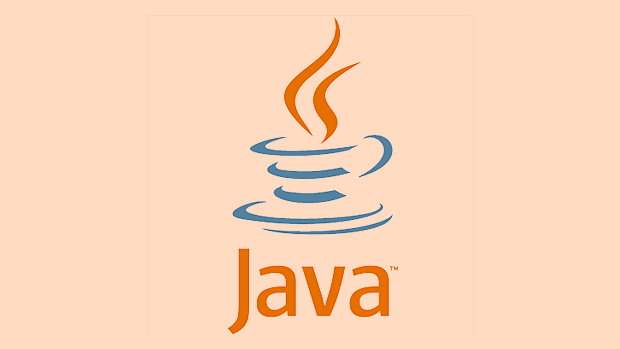A Guide to Internationalization (i18n) in Java Applications
Jul 25, 2025 am 01:32 AMJava's internationalization (i18n) enables applications to adapt to different languages and regions using Locale and ResourceBundle. 1. Use Locale objects (e.g., en_US, fr_FR) to identify regions and load corresponding resource bundles (messages_en.properties, messages_fr.properties) via ResourceBundle.getBundle(). 2. Format dates, numbers, and currencies with java.text.DateFormat and NumberFormat using locale-specific rules (e.g., DateFormat.getDateInstance(DateFormat.LONG, new Locale("de", "DE"))). 3. Handle dynamic text with MessageFormat and placeholders (e.g., MessageFormat.format(messages.getString("welcome"), "Alice", "New York", new Date())) to support grammatical variations. 4. Follow best practices: use consistent naming, provide a default messages.properties, externalize all UI text, design for text expansion, avoid string concatenation, test with multiple locales, and ensure UTF-8 encoding. 5. In web apps like Spring Boot, auto-detect locale from HTTP headers and use MessageSource to retrieve localized messages, with frameworks automatically loading appropriate property files from the classpath. Java’s i18n support is mature and effective for building globally ready applications when implemented early.

Internationalization (i18n) in Java allows applications to adapt to different languages, regions, and cultural conventions without code changes. It’s essential for building software that serves a global audience. Java provides robust built-in support for i18n through the java.util.Locale, java.text, and java.util.ResourceBundle classes. Here’s a practical guide to implementing i18n in Java applications.

1. Understanding Locale and Resource Bundles
The foundation of Java i18n is the Locale object, which identifies a specific geographical, political, or cultural region. Examples include en_US (English, United States), fr_FR (French, France), and ja_JP (Japanese, Japan).
Java uses resource bundles to store locale-specific data—typically text messages, labels, and UI strings. These are usually stored as .properties files.

Example: Message Resource Bundles
Create property files for each locale:
-
messages_en.properties
greeting=Hello farewell=Goodbye
messages_fr.propertiesgreeting=Bonjour farewell=Au revoir
messages_es_MX.propertiesgreeting=Hola farewell=Adiós
Place these files in your src/main/resources directory (for Maven/Gradle projects).
Load them using ResourceBundle:
Locale locale = new Locale("fr", "FR");
ResourceBundle messages = ResourceBundle.getBundle("messages", locale);
System.out.println(messages.getString("greeting")); // Output: BonjourNote: The base name (e.g.,
messages) must match the filename prefix. Java automatically selects the appropriate file based on the providedLocale.
2. Formatting Numbers, Dates, and Currencies
Java’s java.text package provides classes to format data according to locale-specific rules.
Date and Time Formatting
Locale locale = new Locale("de", "DE");
DateFormat df = DateFormat.getDateInstance(DateFormat.LONG, locale);
Date today = new Date();
System.out.println(df.format(today)); // e.g., 10. April 2025Number and Currency Formatting
NumberFormat nf = NumberFormat.getCurrencyInstance(new Locale("ja", "JP"));
System.out.println(nf.format(123456.78)); // ¥123,457
NumberFormat percent = NumberFormat.getPercentInstance(new Locale("en", "US"));
System.out.println(percent.format(0.75)); // 75%Using these formatters ensures numbers and dates appear natural to users in their region.
3. Handling Dynamic Messages with Placeholders
Avoid concatenating strings. Instead, use MessageFormat to handle variable content in localized messages.
Example:
Add a parameterized message:
# messages_en.properties
welcome=User {0} logged in from {1} at {2}.String pattern = messages.getString("welcome");
String formatted = MessageFormat.format(pattern, "Alice", "New York", new Date());
System.out.println(formatted);
// Output: User Alice logged in from New York at Apr 10, 2025.This approach supports reordering of placeholders in translations (important for grammar in different languages).
4. Best Practices for Java i18n
Follow these guidelines to build maintainable and scalable i18n support:
- ? Use consistent naming for resource bundles (e.g.,
messages_lang_COUNTRY.properties). - ? Always specify a default bundle (e.g.,
messages.properties) for fallback. - ? Externalize all user-facing text — never hardcode strings.
- ? Design UI with text expansion in mind — translated text can be 30–50% longer.
- ? Avoid string concatenation for sentences; use
MessageFormat. - ? Test with multiple locales, including right-to-left (RTL) languages if applicable.
- ? Use UTF-8 encoding for properties files (Java 9 defaults to UTF-8; earlier versions may require conversion).
Tip: Use tools like
native2ascii(or build plugins) to convert non-ASCII characters in.propertiesfiles if needed.
5. Integrating i18n in Web Applications (Brief)
In web apps (e.g., Spring Boot), you can auto-detect locale via HTTP headers (Accept-Language) and inject messages using frameworks.
Spring Example:
@Autowired
private MessageSource messageSource;
public String getGreeting(Locale locale) {
return messageSource.getMessage("greeting", null, locale);
}Spring automatically loads messages_en.properties, messages_fr.properties, etc., from the classpath.
Basically, Java’s i18n support is powerful and mature. By using ResourceBundle, proper formatting, and externalized messages, you can build applications that seamlessly adapt to users around the world. Start early—adding i18n later is much harder.
The above is the detailed content of A Guide to Internationalization (i18n) in Java Applications. For more information, please follow other related articles on the PHP Chinese website!

Hot AI Tools

Undress AI Tool
Undress images for free

Undresser.AI Undress
AI-powered app for creating realistic nude photos

AI Clothes Remover
Online AI tool for removing clothes from photos.

Clothoff.io
AI clothes remover

Video Face Swap
Swap faces in any video effortlessly with our completely free AI face swap tool!

Hot Article

Hot Tools

Notepad++7.3.1
Easy-to-use and free code editor

SublimeText3 Chinese version
Chinese version, very easy to use

Zend Studio 13.0.1
Powerful PHP integrated development environment

Dreamweaver CS6
Visual web development tools

SublimeText3 Mac version
God-level code editing software (SublimeText3)
 Asynchronous Programming Techniques in Modern Java
Jul 07, 2025 am 02:24 AM
Asynchronous Programming Techniques in Modern Java
Jul 07, 2025 am 02:24 AM
Java supports asynchronous programming including the use of CompletableFuture, responsive streams (such as ProjectReactor), and virtual threads in Java19. 1.CompletableFuture improves code readability and maintenance through chain calls, and supports task orchestration and exception handling; 2. ProjectReactor provides Mono and Flux types to implement responsive programming, with backpressure mechanism and rich operators; 3. Virtual threads reduce concurrency costs, are suitable for I/O-intensive tasks, and are lighter and easier to expand than traditional platform threads. Each method has applicable scenarios, and appropriate tools should be selected according to your needs and mixed models should be avoided to maintain simplicity
 Best Practices for Using Enums in Java
Jul 07, 2025 am 02:35 AM
Best Practices for Using Enums in Java
Jul 07, 2025 am 02:35 AM
In Java, enums are suitable for representing fixed constant sets. Best practices include: 1. Use enum to represent fixed state or options to improve type safety and readability; 2. Add properties and methods to enums to enhance flexibility, such as defining fields, constructors, helper methods, etc.; 3. Use EnumMap and EnumSet to improve performance and type safety because they are more efficient based on arrays; 4. Avoid abuse of enums, such as dynamic values, frequent changes or complex logic scenarios, which should be replaced by other methods. Correct use of enum can improve code quality and reduce errors, but you need to pay attention to its applicable boundaries.
 Understanding Java NIO and Its Advantages
Jul 08, 2025 am 02:55 AM
Understanding Java NIO and Its Advantages
Jul 08, 2025 am 02:55 AM
JavaNIO is a new IOAPI introduced by Java 1.4. 1) is aimed at buffers and channels, 2) contains Buffer, Channel and Selector core components, 3) supports non-blocking mode, and 4) handles concurrent connections more efficiently than traditional IO. Its advantages are reflected in: 1) Non-blocking IO reduces thread overhead, 2) Buffer improves data transmission efficiency, 3) Selector realizes multiplexing, and 4) Memory mapping speeds up file reading and writing. Note when using: 1) The flip/clear operation of the Buffer is easy to be confused, 2) Incomplete data needs to be processed manually without blocking, 3) Selector registration must be canceled in time, 4) NIO is not suitable for all scenarios.
 How Java ClassLoaders Work Internally
Jul 06, 2025 am 02:53 AM
How Java ClassLoaders Work Internally
Jul 06, 2025 am 02:53 AM
Java's class loading mechanism is implemented through ClassLoader, and its core workflow is divided into three stages: loading, linking and initialization. During the loading phase, ClassLoader dynamically reads the bytecode of the class and creates Class objects; links include verifying the correctness of the class, allocating memory to static variables, and parsing symbol references; initialization performs static code blocks and static variable assignments. Class loading adopts the parent delegation model, and prioritizes the parent class loader to find classes, and try Bootstrap, Extension, and ApplicationClassLoader in turn to ensure that the core class library is safe and avoids duplicate loading. Developers can customize ClassLoader, such as URLClassL
 Handling Common Java Exceptions Effectively
Jul 05, 2025 am 02:35 AM
Handling Common Java Exceptions Effectively
Jul 05, 2025 am 02:35 AM
The key to Java exception handling is to distinguish between checked and unchecked exceptions and use try-catch, finally and logging reasonably. 1. Checked exceptions such as IOException need to be forced to handle, which is suitable for expected external problems; 2. Unchecked exceptions such as NullPointerException are usually caused by program logic errors and are runtime errors; 3. When catching exceptions, they should be specific and clear to avoid general capture of Exception; 4. It is recommended to use try-with-resources to automatically close resources to reduce manual cleaning of code; 5. In exception handling, detailed information should be recorded in combination with log frameworks to facilitate later
 How does a HashMap work internally in Java?
Jul 15, 2025 am 03:10 AM
How does a HashMap work internally in Java?
Jul 15, 2025 am 03:10 AM
HashMap implements key-value pair storage through hash tables in Java, and its core lies in quickly positioning data locations. 1. First use the hashCode() method of the key to generate a hash value and convert it into an array index through bit operations; 2. Different objects may generate the same hash value, resulting in conflicts. At this time, the node is mounted in the form of a linked list. After JDK8, the linked list is too long (default length 8) and it will be converted to a red and black tree to improve efficiency; 3. When using a custom class as a key, the equals() and hashCode() methods must be rewritten; 4. HashMap dynamically expands capacity. When the number of elements exceeds the capacity and multiplies by the load factor (default 0.75), expand and rehash; 5. HashMap is not thread-safe, and Concu should be used in multithreaded
 Explained: Java Polymorphism in Object-Oriented Programming
Jul 05, 2025 am 02:52 AM
Explained: Java Polymorphism in Object-Oriented Programming
Jul 05, 2025 am 02:52 AM
Polymorphism is one of the core features of Java object-oriented programming. Its core lies in "one interface, multiple implementations". It implements a unified interface to handle the behavior of different objects through inheritance, method rewriting and upward transformation. 1. Polymorphism allows the parent class to refer to subclass objects, and the corresponding methods are called according to the actual object during runtime; 2. The implementation needs to meet the three conditions of inheritance relationship, method rewriting and upward transformation; 3. It is often used to uniformly handle different subclass objects, collection storage and framework design; 4. When used, only the methods defined by the parent class can be called. New methods added to subclasses need to be transformed downward and accessed, and pay attention to type safety.
 Effective Use of Java Enums and Best Practices
Jul 07, 2025 am 02:43 AM
Effective Use of Java Enums and Best Practices
Jul 07, 2025 am 02:43 AM
Java enumerations not only represent constants, but can also encapsulate behavior, carry data, and implement interfaces. 1. Enumeration is a class used to define fixed instances, such as week and state, which is safer than strings or integers; 2. It can carry data and methods, such as passing values ??through constructors and providing access methods; 3. It can use switch to handle different logics, with clear structure; 4. It can implement interfaces or abstract methods to make differentiated behaviors of different enumeration values; 5. Pay attention to avoid abuse, hard-code comparison, dependence on ordinal values, and reasonably naming and serialization.







